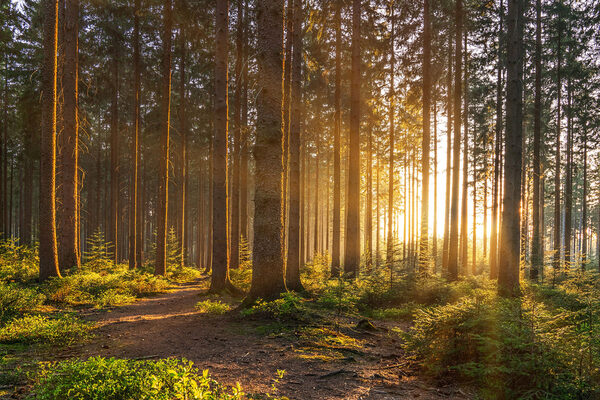Wiesbaden city forest - a multi-talent
Since the middle of the 19th century, Wiesbaden's forest has expanded from 900 hectares at that time to almost 4300 hectares.
Many citizens of our city regularly relax in the forest around Wiesbaden. What many do not know: The forest, which stretches like a semicircle from east to west around the city area, belongs to the city of Wiesbaden and is managed independently. Since the middle of the 19th century, the Wiesbaden forest has grown from 900 hectares at that time to almost 4300 hectares. The largest increase took place between 1926 and 1928, when a whole series of surrounding villages were incorporated into Wiesbaden. It has had its own forestry administration since 1977.
Geologically and climatically, Wiesbaden offers excellent conditions for the growth of hardwood species. It is therefore not surprising that our forest consists of over 80 percent beech and oak. However, the aim of forest management is to establish as many of the more than 50 tree species as possible at different ages, so that there are permanent trees (permanent forest) on the land.
City forest has been managed naturally since 1988
For example, more cherries, maples and ash trees are being planted and care is being taken to promote existing trees. In principle, there has been no clear cutting in the forest for many years. Planting only takes place where larger open areas have been created by storms, snow breakage or bark beetles. Otherwise, we rely on natural regeneration, which means that the trees bear seeds and fruit from a certain age, which germinate in the ground and grow back into a stately trunk over the course of 100 to 200 years. This type of management, in which many tree species grow at different ages, not only offers ecological advantages in terms of biodiversity, but also positive economic effects in the long term.
The municipal forest has been managed naturally since 1988 and has been certified according to Naturland and FSC® (Forest Stewardship Council®, FSC® C007867) since 1999, thus combining careful management with a high standard of biotope and species protection. No pesticides are used and native tree species are planted or their regeneration promoted.
In addition, the naturally occurring tree species are already better adapted to the local conditions, so that the greatest possible diversity also supports the stability of the urban forest in the face of increasingly noticeable climate change and its consequences: The proportion of spruce is now only very low, as this tree species lacks precipitation; it no longer actually plays a role in the tree species composition.
Contact us
Parks department
Address
65189 Wiesbaden
Postal address
65029 Wiesbaden
Arrival
Notes on public transport
Bus stop Statistisches Bundesamt; bus lines 16, 22, 27, 28, 37, 45, X26, x72, 262
Telephone
- +49 611 312905Parks and green spaces, children's playgrounds, public trees
- +49 611 313249Old cemetery barbecue areas
- +49 611 23608513Urban forest, agriculture
- +49 611 23608518Terra Levis burial forest
- +49 611 313241Cemeteries in Wiesbaden
- +49 611 4090770Pheasantry
- +49 611 312901Office management
Opening hours
Mondays to Fridays from 8 a.m. to 12 noon, afternoons by appointment.
Information on accessibility
- Barrier-free access is available
- The WC is barrier-free
